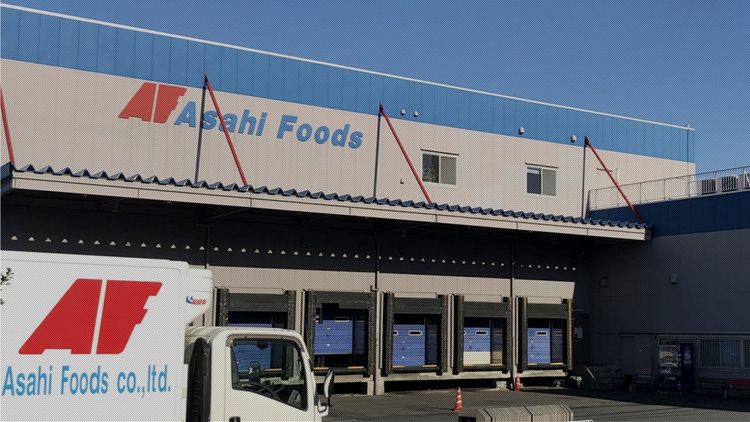Founded in 1999, "Demaecan" is one of the largest delivery services in Japan, serving 47 prefectures throughout the country. Aiming to further improve customer satisfaction, "Demaecan" introduced "1km mesh actual weather" of Weathernews' weather data provision and analysis service "WxTech®".
We interviewed Taira - san, General Manager of Delivery Department, Product Division, Demae-can Co.
Weather Data Shines a White Light on Reducing User Stress from Delayed Deliveries
The "Demae-can" is a delivery service that allows customers to order menu items from their favorite member restaurants online and have them delivered to their homes. It also undertakes deliveries on behalf of stores that do not have a delivery function or delivery network, such as boxed lunches, prepared foods, and daily necessities. What was the impetus behind the idea of utilizing weather data?
After the COVID-19 pandemic, we have been working on various ways to make our service more comfortable for users amidst the increased demand for delivery services. Among them, we are particularly focusing on improving the accuracy of predictions of scheduled delivery times. This is because it is very important for users to know when their packages will be delivered.
When a user places an order on the "Demaecan" application or website, the estimated delivery time is provided as the "time from order to delivery. The smaller this error is, the less stressful it is for the user to use the service. On the other hand, if there is an error, it causes a great deal of stress and directly leads to a decline in customer satisfaction, which in turn leads to a decrease in sales.
We have been working to improve the accuracy of our estimated delivery times with the goals of "average delivery time of 30 minutes or less" and "no more than 5% of cases of delay of 10 minutes or more.
Currently, we are using machine learning to automatically calculate delivery times. In addition to store data such as date, area, and food preparation time, we are learning various data such as when the delivery person can arrive at the store. As we considered what kind of data we would need to further improve accuracy in the future, we turned our attention to the use of weather data such as weather and temperature. (Taira - san)

Weather Data x Delivery" to meet the needs of those who "don't want to go outside" on rainy days
He said this was the first time he had used weather data, but in fact he had long felt there was a correlation between weather and food delivery.
During bad weather, such as rain, the risk of accidents increases, so delivery workers drive more safely and slowly. In addition, they have to manage their products more strictly, taking care not to get wet, which basically tends to delay the delivery time," says Taira - san.
This is not the only direct impact that weather has on delivery times.
"When it rains and winds, or when it snows or other stormy weather, users' needs increase and the number of orders increases due to the psychology of 'I don't want to go outside,'" he says. However, the same is true for delivery staff, who tend to avoid going outside. Weather conditions can greatly affect the utilization rate of deliveries, which in turn affects delivery times.
To address this issue, we introduced "1km mesh actual weather" data for 10,000 locations nationwide on a trial basis in July 2022. The "1km mesh actual weather" is a service that provides actual weather analysis data at a resolution of 1km mesh every 10 minutes via API. The service's "granularity of data" and "high update frequency" met the delivery needs of the client. We compared the data with that of other companies and found that none of them had actual weather data for an area as detailed as '1 km. If the data is for a wide area, such as a city, town, or village, it would not be easy to use for delivery.
For example, even in Meguro-ku, there is a considerable difference in user needs between the Nakameguro area, which has a well-balanced mix of residential and commercial areas and a large number of restaurants, and other areas.
By adding weather data for each area as fine as a 1km mesh to store data such as traffic information, location, and regional characteristics, we can calculate scheduled delivery times with even greater accuracy," says Taira - san.

In addition, the frequency of updates, "every 10 minutes," was a major factor in the decision to introduce the system, as the weather can change rapidly during the summer months, and heavy rain and lightning can occur in a short period of time.
For example, if more users decide to go out for lunch today, but it starts to rain, they can use the delivery service in a hurry," he says. This would be a great advantage," says Taira - san.
In addition to improving the accuracy of scheduled delivery times, this virtuous cycle benefits all users, stores, and delivery personnel.
Since the full-scale introduction of "1km mesh live weather" in October 2022, the company says that through continuous improvement, it has now almost achieved its goals of "average delivery time within 30 minutes" and "no more than 5% of cases of delay of 10 minutes or more. The company has also been able to shorten the delivery time error from 7 to 8 minutes in the past to 2 to 3 minutes after the introduction of the system.
Of course, we believe that weather data is not the only factor, but we have actually improved the accuracy of delivery time estimates, and we are fully aware of the positive impact that the use of weather data has had on customer satisfaction," says Taira - san.
Furthermore, weather data is now being used not only to "predict delivery times" but also to "predict store product preparation times. This has resulted in benefits not only for users, but also for everyone involved in food delivery, including stores and delivery staff.

"When a delivery order is placed, the delivery staff is notified of the product preparation time at the store. During stormy weather, orders are concentrated in stores, so it can take longer than usual, but by utilizing weather data, we are able to more accurately predict product preparation time.
As a result, delivery personnel can now pick up the merchandise at the appropriate time. This has had a positive effect on the store side as well, as it has reduced the number of times delivery staff have to wait for long periods of time when the store is crowded due to inclement weather.
Thus, the incorporation of weather data has not only improved the accuracy of forecasting scheduled delivery times, but has also led to a reduction in the delivery time itself. In addition to improving customer satisfaction, this has resulted in a very positive cycle for the store and the delivery staff," says Taira - san.

Weather data is essential for new business beyond delivery.
Taira - san believes that "weather data x delivery" has the potential to expand into the field of "quick commerce," where commodities and daily necessities are quickly delivered to users.
What is widely recognized and has taken root among users is the notion that they can have what they want delivered right away," he says. This is true not only for food, but also for daily necessities and daily necessities sold at convenience stores, drugstores, and supermarkets.
Now that we are achieving our goal of 'average delivery time of 30 minutes or less,' our ability to deliver with high speed should be a strength of our company. We believe that weather data is indispensable to fulfill the need to deliver what we want in a prompt and accurate predicted time," said Taira - san.
In an age when speed is of the essence, we look forward to watching the challenges of this new field as the leader in the delivery industry and a company that continues to provide services in line with the values of its users.































